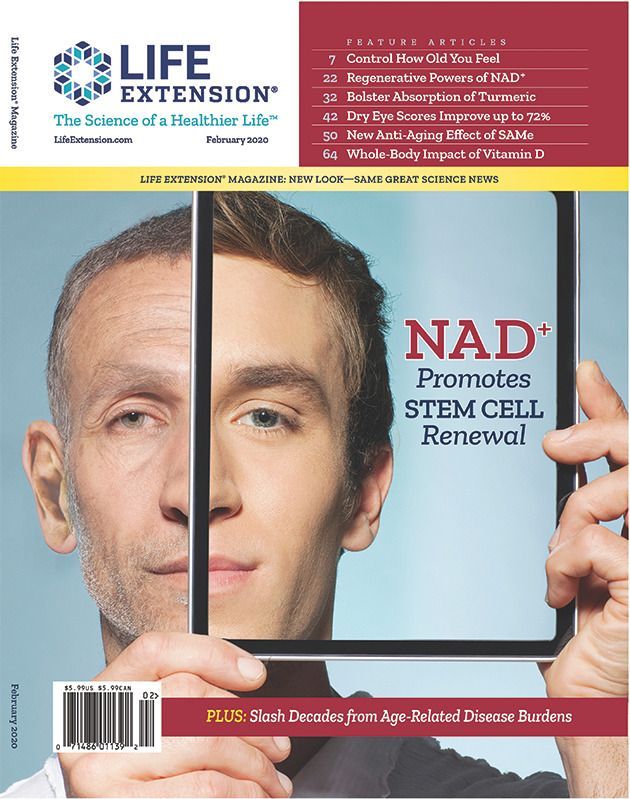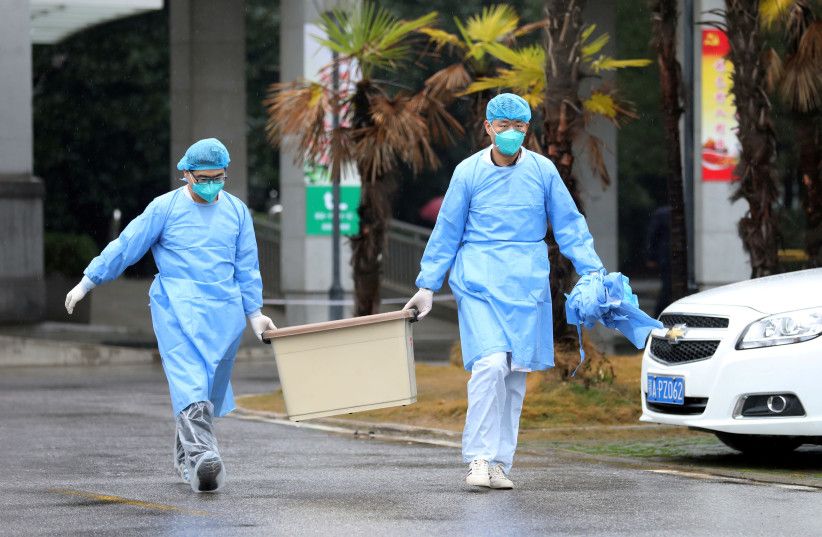
Category: health – Page 367


Thai doctors say cocktail of flu, HIV drugs can help fight coronavirus
Chinese health officials have already been administering the HIV and flu drugs to fight the coronavirus. The use of the three together in a cocktail seemed to improve the treatment, the Thai doctors said.
Another doctor said that a similar approach in two other patients resulted in one displaying some allergic reaction but the other showed improvement.
“We have been following international practices, but the doctor increased the dosage of one of the drugs,” said Somsak Akkslim, director-general of the Medical Services Department, referring to the flu medicine Oseltamivir.

Robots To The Rescue: How High-Tech Machines Are Being Used To Contain The Wuhan Coronavirus
When doctors in a Washington hospital sought to treat the first confirmed case of the Wuhan coronavirus in the United States on Wednesday, they tapped a device called Vici that allowed them to interact with their patient not in person, but through a screen.
The telehealth device, which looks like a tablet on wheels that doctors can use to talk to patients and perform basic diagnostic functions, like taking their temperature, is one of a handful of high-tech machines that doctors, airport workers, and hotel staff are using to help contain the outbreak that has been sweeping the world since it was discovered in Wuhan, China in late December.
“Caregivers provide care within the isolation unit, but technology is allowing us to reduce the number of up-close interactions,” says Dr. Amy Compton-Phillips, chief clinical officer at Providence Regional Medical Center in Everett, Washington, where the patient is being treated. Vici, made by Santa Barbara, California-based InTouch Health, resembles a tablet on wheels, and can protect caregivers from infection.

Thailand ‘cures’ coronavirus with anti-HIV drug cocktail in 48 hours
A Chinese woman infected with the new coronavirus showed a dramatic improvement after she was treated with a cocktail of anti-virals used to treat flu and HIV, Thailand’s health ministry said Sunday.
The 71-year-old patient tested negative for the virus 48 hours after Thai doctors administered the combination, doctor Kriengsak Attipornwanich said during the ministry’s daily press briefing.
“The lab result of positive on the coronavirus turned negative in 48 hours,” Kriengsak said.

Edward Bouchet
Edward Alexander Bouchet (September 15, 1852 – October 28, 1918) was an African American physicist and educator and was the first African-American to earn a Ph.D. from any American university, completing his dissertation in physics at Yale in 1876. While completing his studies, Bouchet was also the first African American to be inducted in to Phi Beta Kappa for his stellar academic performance in his undergraduate studies. Bouchet’s original research focused on geometrical optics, and he wrote a dissertation entitled “On Measuring Refractive Indices.”
Unfortunately, after completing his dissertation, Bouchet was unable to find a university teaching position after college, probably because of racial discrimination. Bouchet moved to Philadelphia in 1876 and took a position at the Philadelphia’s Institute for Colored Youth (now Cheyney University of Pennsylvania), where he taught physics and chemistry for the next 26 years. Bouchet spent the next several years in several different teaching positions around the country. In 1916, Bouchet returned home to New Haven in poor health, and died in 1918 at age 66.
Dr. Bouchet’s impact on physics still resonates today around the world. The American Physical Society (APS Physics) confers the Edward A. Bouchet Award on some of the nation’s outstanding physicists for their contribution to physics. The Edward Bouchet Abdus Salam Institute was founded in 1988 by the late Nobel Laureate, Professor Abdus Salam under the direction of the founding Chairman Charles S. Brown. In 2005, Yale and Howard University founded the Edward A. Bouchet Graduate Honor Society in his name.
Fun—and Uranium—for the Whole Family in This 1950s Science Kit
Did product safety laws lead to the dumbing down of science toys?
“Users should not take ore samples out of their jars, for they tend to flake and crumble and you would run the risk of having radioactive ore spread out in your laboratory.” Such was the warning that came with the Gilbert U-238 Atomic Energy Lab, a 1950s science kit that included four small jars of actual uranium. Budding young nuclear scientists were encouraged to use the enclosed instruments to measure the samples’ radioactivity, observe radioactive decay, and even go prospecting for radioactive ores. Yes, the Gilbert company definitely intended for kids to try this at home. And so the company’s warning was couched not in terms of health risk but rather as bad scientific practice: Removing the ore from its jar would raise the background radiation, thereby invalidating your experimental results.
The Gilbert U-238 Atomic Energy Lab put a positive spin on radioactivity
The A.C. Gilbert Co., founded in 1909 as the Mysto Manufacturing Co., was already a leader in toys designed to inspire interests in science and engineering. Founder Alfred Carlton Gilbert’s first hit was the Erector Set, which he introduced in 1913. In the early 1920s, the company sold vacuum tubes and radio receivers until Westinghouse Electric cried patent infringement. Beginning in 1922, A.C. Gilbert began selling chemistry sets.

Research Teams Sequence Entire Coronavirus Genome To Understand Origin And Virulent Properties
Researchers at the Institut Pasteur in France have become the second monitoring team in the world to sequence the entire novel coronavirus (2019-nCoV) genome in an effort to better understand its origin and virulent properties.
Nearly 8,000 reported cases and hundreds of deaths have been reported in at least 19 countries since the outbreak began in Wuhan, China, last December, prompting the World Health Organization yesterday to declare a public health emergency after evidence of human-to-human transmission had surfaced. International healthcare experts have since prioritized research surrounding 2019-nCoV in an effort to understand and tame the global outbreak.
“Sequencing the genome of pathogens is crucial for the development of specific diagnostic tests and the identification of potential treatment options,” explained Sylvie van der Werf, director of the National Reference Center (CNR) for Respiratory Viruses at the Institut Pasteur, in a statement.

Setting the agenda for social science research on the human microbiome
The human microbiome is an important emergent area of cross, multi and transdisciplinary study. The complexity of this topic leads to conflicting narratives and regulatory challenges. It raises questions about the benefits of its commercialisation and drives debates about alternative models for engaging with its publics, patients and other potential beneficiaries. The social sciences and the humanities have begun to explore the microbiome as an object of empirical study and as an opportunity for theoretical innovation. They can play an important role in facilitating the development of research that is socially relevant, that incorporates cultural norms and expectations around microbes and that investigates how social and biological lives intersect. This is a propitious moment to establish lines of collaboration in the study of the microbiome that incorporate the concerns and capabilities of the social sciences and the humanities together with those of the natural sciences and relevant stakeholders outside academia. This paper presents an agenda for the engagement of the social sciences with microbiome research and its implications for public policy and social change. Our methods were informed by existing multidisciplinary science-policy agenda-setting exercises. We recruited 36 academics and stakeholders and asked them to produce a list of important questions about the microbiome that were in need of further social science research. We refined this initial list into an agenda of 32 questions and organised them into eight themes that both complement and extend existing research trajectories. This agenda was further developed through a structured workshop where 21 of our participants refined the agenda and reflected on the challenges and the limitations of the exercise itself. The agenda identifies the need for research that addresses the implications of the human microbiome for human health, public health, public and private sector research and notions of self and identity. It also suggests new lines of research sensitive to the complexity and heterogeneity of human–microbiome relations, and how these intersect with questions of environmental governance, social and spatial inequality and public engagement with science.
